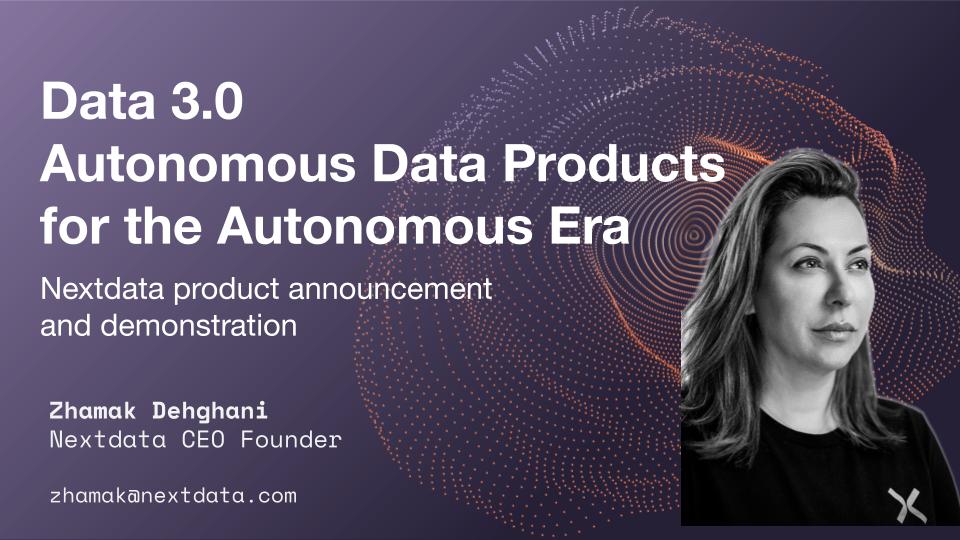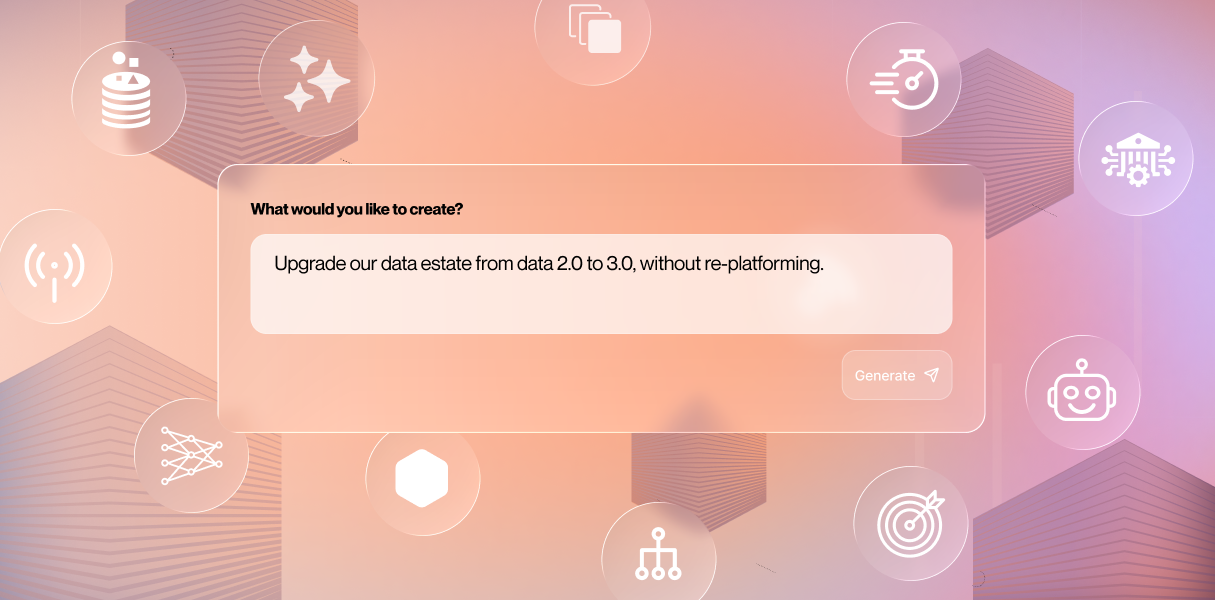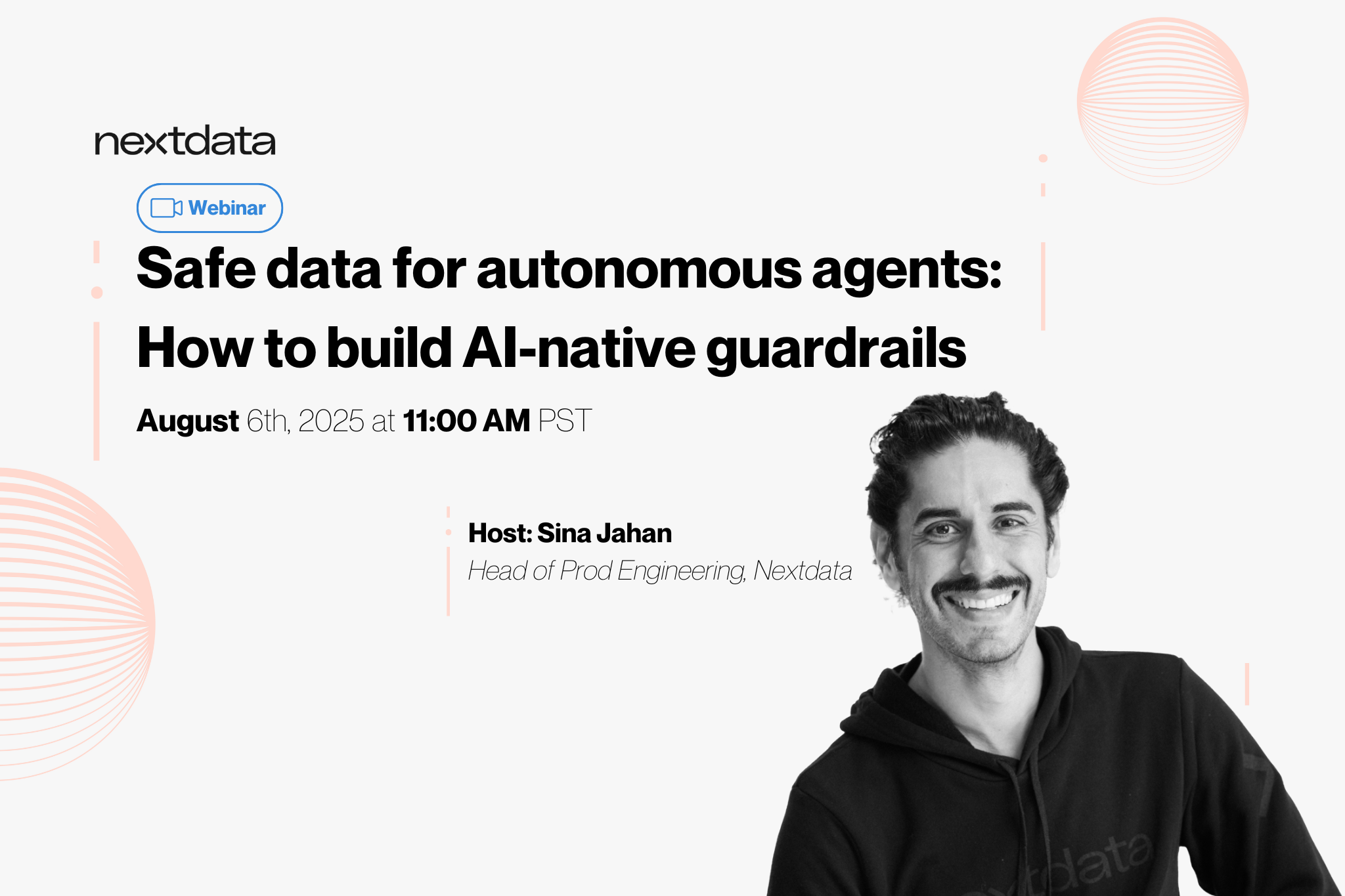Autonomous Data Products
Our Product
The 10 most-asked questions from the Nextdata OS launch (and how we answered them)
Two weeks ago, we launched the Nextdata Operating System—and the technical community showed up. At the event and in follow-ups, we fielded hundreds of questions from architects, engineers, and data leaders eager to dig deeper into how the platform works, where it fits, and how it supports real-world data product development.
So we sat down with our Head of Product, Jonathon Morgan, to go through the 10 most frequently asked technical questions. Here’s what we heard—and how we answered.
1. How do you handle access control, security, and governance?
We integrate with your existing identity and access management systems, not replace them. Nextdata OS supports RBAC, ABAC, and plugs into enterprise systems like SSO and SCIM. Governance can be enforced locally (per data product) and globally (across domains) using policy-as-code, supporting things like encryption, masking, and semantic enforcement.
“We’re not asking you to replace what you have. We’re extending what you already trust.”
2. How does Nextdata OS integrate with my existing data ecosystem?
Nextdata OS is designed as middleware, not a monolith. It integrates via APIs with catalogs (like Collibra), data quality tools, ETL platforms, and more. It’s built to enhance—not disrupt—your current data stack.
“We hesitate to use the word ‘migration’—this is more like an upgrade-in-place.”
3. Where does Nextdata OS fit in my architecture, and how is it deployed?
Think of it as a logical layer above your storage and compute. It runs in your environment as a Kubernetes application and orchestrates your existing infrastructure to encapsulate and manage autonomous data products.
“We let you build on your existing investments.”
4. How do you manage semantic alignment and resolve conflicting definitions?
We use generative AI to infer and generate semantic models, but also support explicit DSL-based definitions (in YAML, Python, SQL, etc.). Semantic contracts act as an interface between data producers and consumers. Global policies can enforce consistent semantics across domains.
“We combine local autonomy with global standardization—without central teams becoming a bottleneck.”
5. How do you ensure data quality, lineage, and observability?
Nextdata OS uses data contracts composed of “promises” (what a product guarantees downstream) and “expectations” (what it requires upstream). These are validated at runtime, enabling loose coupling and robust lineage without fragile dependencies.
“If a change breaks an expectation, it’s contained. Bad data doesn’t flow downstream.”
6. Is it usable by non-technical users?
Yes. The platform is designed for multi-persona collaboration—from business users to domain experts to developers. A visual interface supports search, discovery, and trust. DSLs like YAML and Python make development approachable for non-data-engineers.
“We’re lowering the bar so subject matter experts can create data products, not just data engineers.”
7. Can it scale across a complex enterprise with multiple domains?
Absolutely. That’s what it was built for. Nextdata OS is designed to support federated architectures, complex governance, and heterogeneous stacks—common in large enterprises and M&A-heavy organizations.
“It’s not just compatible with complexity—it is designed to simplify it.”
8. How does the Nexty AI Assistant work?
Nexty is our multi-agent AI tool that ingests legacy pipelines, transformation logic, and documentation—then generates deployable data products and domain designs. It uses models like Gemini and others, cutting transformation time from months to hours.
“Nexty used to be a team of human experts. Now it’s an AI assistant that does 80% of the work.”
9. Can I extend the platform and build my own integrations?
Yes. We support a driver architecture that abstracts infrastructure complexity. These drivers (for Snowflake, Redshift, S3, etc.) will be open sourced so customers and partners can build their own integrations.
“The 80% use case is supported out of the box, and the long tail of heterogeneous storage and data types can be supported.”
10. How is the product priced?
Nextdata OS is offered as an annual or multi-year license, priced based on the number of data products under management. It is typically deployed into the customer’s environment for full control and integration.
“Simple model, no per-query surprises.”
Want to go deeper?
If any of these questions are top-of-mind for your team, let’s talk. Reach out to sales@nextdata.com and we’ll set up a technical session tailored to your needs.
#autonomous_data_products #FAQ













